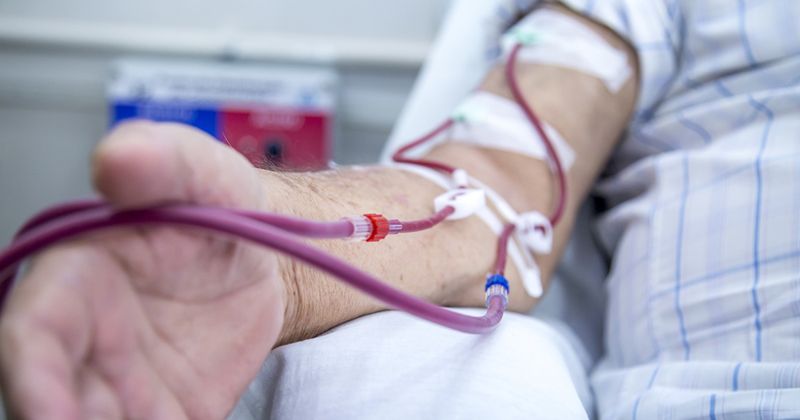Study explores patients with incident kidney dysfunction on incremental hemodialysis
Researchers found it feasible for patients with incident kidney dysfunction requiring dialysis to receive incremental-start hemodialysis with adjuvant pharmacotherapy.
Further, patients with incident kidney dysfunction on incremental hemodialysis with adjuvant pharmacotherapy showed lower decline in urine volume than those in the conventional group at 24 weeks.

“Almost all Americans with kidney dysfunction requiring dialysis (KDRD) initiated on treatment with maintenance hemodialysis are prescribed standard dialytic therapy of fixed frequency (thrice-weekly hemodialysis) and dose. This standard hemodialysis therapy disregards individual levels of residual kidney function,” Mariana Murea, MD, from the department of internal medicine at the Wake Forest School of Medicine in North Carolina, and colleagues wrote. “Prospective studies with randomized hemodialysis frequency assignments are needed to test the emerging concept that incremental hemodialysis is effective and safe in defined clinical scenarios. Herein, we report the results of the TWOPLUS Pilot Study designed to assess the feasibility of individual randomization to incremental-start vs. conventional hemodialysis.”
In a pilot study, researchers randomized 48 patients who were beginning maintenance hemodialysis to incremental hemodialysis (23 patients) or conventional hemodialysis (25 patients). All patients had an eGFR of at least 5 mL/min/1.73 m² and urine volume of at least 500 mL in24 hours.
Patients in the incremental group received twice-weekly hemodialysis with adjuvant pharmacotherapy therapy for a total of 6 weeks, then changed to thrice-weekly hemodialysis. Additionally, “protocol-based loop diuretics, sodium bicarbonate and patiromer were prescribed to 100%, 39% and 17% of patients on twice-weekly hemodialysis, respectively.”
Those in the conventional group received thrice-weekly hemodialysis.
At the mean follow-up of 281.9 days, 96% of patients adhered to the hemodialysis schedule. Seven deaths occurred (one in the incremental group; six in the conventional group) and by week 24, the incremental group showed 51% lower decline in urine volume and 57.9% lower decline in the averaged urea and creatinine clearances.
Additionally, those in the incremental group showed 69% lower hospitalization compared with the conventional group.
“This pilot trial showed time-delineated treatment with twice-weekly hemodialysis and adjuvant pharmacologic therapy followed by conversion to thrice-weekly hemodialysis, along with serial timed urine collection is feasible,” Murea and colleagues wrote. “These findings support indication to progress to a larger multicenter clinical trial with modified eligibility criteria and individualized periods of twice-weekly hemodialysis to conclusively investigate clinical effectiveness and safety of individualized hemodialysis.”
Limitations of this study include a small sample size.
Murea told Healio, “We hope the plurality of positive findings that emerged from this study will emphasize the legitimacy of and grow momentum for all scientists devoted to further the science of hemodialysis in incident end-stage kidney disease with residual kidney function in the form of a gold-standard, rigorous multicenter clinical trial. Our patients need this.”
